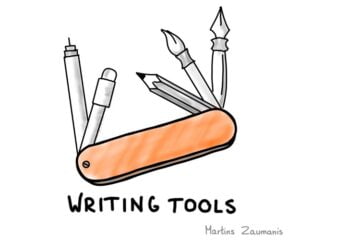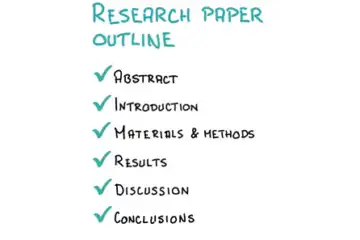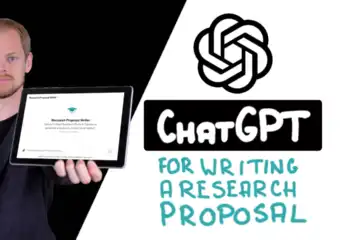Scientists get naturally anxious when submitting a research paper. We know that peer review is coming. The ChatGPT-based “Research Paper Reviewer” will evaluate your manuscript and offer suggestions for polishing the paper before submitting it to a scientific journal. This AI help might just be the little nudge that helps your research paper get past the ferocious Reviewer 2.
In this article, I will explain how the “Research Paper Review GPT” works and what to expect from it. Importantly – I will share what this GPT or any other AI large language model can not do despite the hype that surrounds Artificial Intelligence and ChatGPT.
And of course, you will be able to try the tool yourself.
Before we dive into the details, here is a summary of what the Research Paper Review GPT will do for you:
- You upload your research paper.
- ChatGPT reviews the manuscript in nine categories, including abstract, introduction, methods, results, and discussion. It knows what content each of these sections should hold, so it will give you suggestions for how to improve them, if necessary.
- The Research Paper Review GPT asks you to share the journal to which you plan to submit the manuscript. It then analyzes the journal’s scope to determine if the journal is a good fit for your paper.
- The GPT analyzes how your paper corresponds to the requirements of the journal’s guide for authors. This step will help you to format your paper accordingly.
- Optional bonus step: you can ask the GPT to “offer alternative titles and a list of keywords for your paper”. The six suggestions it provides will be based on keywords that people typically search for within the topic of your research paper.
What is a custom GPT?
A Generative Pre-trained Transformer (GPT) is an Artificial Intelligence (AI) model that is built on the ChatGPT platform. A GPT is a significant improvement over ChatGPT because it can be “trained” to do one particular thing very well.
In this case, I trained the GPT to review a research paper. It knows the principles of how a good research paper should be written and can advise the user if something doesn’t seem right. I used my book “Write an Impactful Research Paper” as the basis for training the AI.
By the way, I made a custom ChatGPT for reviewing a research proposal as well. Try the GPT here.
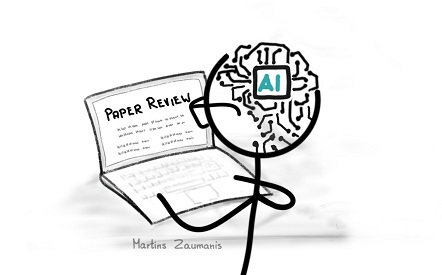
Four steps of using the Research Paper Review GPT
Step 1: Upload your research paper
Open the Research Paper Review GPT and upload your manuscript.
Once you have uploaded the paper, ChatGPT will start the review. For each paper, the AI will evaluate the content in nine categories. These categories match the sections that typically form the structure of a research paper in the social sciences, natural sciences, or engineering and computer sciences. Even if your paper does not hold these exact section titles, the GPT will read the text and offer feedback for each of the following categories.
Title
The ultimate summary of the research paper that is optimized for search and raises the curiosity of the readers.
Abstract
A succinct summary highlighting the main objectives, methods, results, and conclusions of the study.
Introduction
An overview providing context, significance, and the main research question or problem the study addresses.
Objective
A clear and concise statement outlining the specific aim or purpose of the research.
Methods
A detailed description of the research design, data collection methods, analytical techniques, and ethical considerations.
Results
Presentation of the findings, often including data visualizations, with a focus on quantitative descriptions.
Discussion
Analysis and interpretation of the results, alignment with objectives, implications, comparison with scientific literature, limitations, and possible future research directions.
Conclusions
A summary of the key findings, broader implications, and practical recommendations of the research.
Appendix
Supplementary material (including data shared through repositories) that supports the paper’s content, such as detailed data, methodology, calculations, or additional figures, not included in the main sections due to their extensive or specialized nature.
When reviewing each category, the GPT compares the uploaded research paper to the content that is typically included within the particular category. I adapted these instructions from my book “Write an Impactful Research Paper“.
Pro tip: Let the ChatGPT review your paper more than once. Just like human reviewers, the Research Paper Review GPT might find new weak spots from one review to another.
Pro tip No.2: Check the language using the free Chat-GPT based editing tool I developed specifically for research papers. .
Privacy when using Chat GPT
The Research Paper Review GPT is using the ChatGPT platform by OpenAI . So basically, you are sharing your research paper with a private company. Read the privacy policy of ChatGPT to decide if that is something you want to do.
I don’t see what you upload and I don’t see your conversation with ChatGPT.
See below the settings of the Research Paper Review GPT.
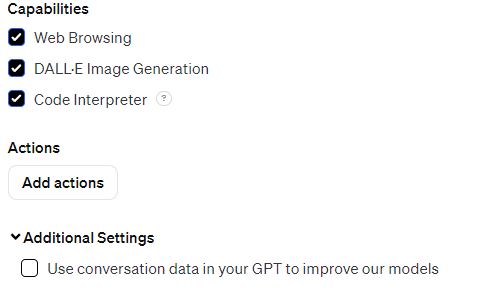
Step 2: Use the review to polish your paper
After checking the manuscript, for each of the nine categories the Research Paper Review GPT will provide you with three things:
Summary
See if the paper summary in for the nine review categories matches what you intended to convey with the research paper. If not, this means that the AI has failed to “understand” the meaning of the text. This is a clear signal that the research paper needs further refining.
Merge the summaries of the nine categories that the Research Paper Review GPT has generated. See if this summary of the summaries clearly conveys the core idea of your research paper. If not, you might need to work on the manuscript clarity a little more.
Comments
For each of the nine categories, the comments will let you know what is good about the particular section and how to refine it, if necessary. In other words, ChatGPT will compare how your paper’s content matches with a well-written research paper. The GPT draws its insights from the book “Write an Impactful Research Paper” to do this.
Suggestions
The suggestions provided by the Research Paper Review GPT will highlight anything that might be missing from the research paper or how to further improve it. These suggestions often prove useful to remind you of something that you might have forgotten in the writing rush.
The Review GPT can not assess the scientific content of your research paper. The AI it uses can only “understand” whether the paper’s structure and content follows the typical patterns and writing principles of a well-written research paper. More on this later.
Step 3: Share the journal where you plan to submit the paper
In the third step, the Research Paper Review GPT will ask you to share the scientific journal to which you plan to submit the paper. You can simply write the journal’s name in the ChatGPT.
The GPT will now “read” the journal’s scope and use AI to compare the content of your paper against it. This will help you to:
- Make sure this is the right journal for your paper.
- Polish the content of your paper to better match the scope of this journal. This step is particularly useful to get past the journal editor. Don’t do it, and you risk a desk rejection.
In some cases, the ChatGPT will not be able to access the journal’s website. This is because some journals restrict the crawling of AI bots (in this case the Research Paper Review GPT is the bot). In such a situation you can simply copy-paste the journal’s scope in the ChatGPT.
Step 4: Format the paper according to the journal’s authors guide
In the fourth step, the Research Paper Review GPT will check the author’s guide of the journal you have pointed it to. Sometimes these guides can be very long so the ChatGPT will summarize the main requirements for you.
And finally, the GPT will compare the formatting of your paper against the requirements of the author’s guide. For example, it might tell you if the page limit is exceeded, it might remind you to include CRediT authorship statement, or suggest you remove the author’s names in case the journal applies a blind review. These are some things that might get your paper desk rejected so it’s worth paying attention.
Don’t rely on the GPT to point to all the requirements of the journal, though. Rather, use this as the first step to decide if the journal is for you. Once committed to a particular journal, do your homework by reading the full author’s guide.
Just like in the previous step, if the Research Paper Review GPT can not access the journal’s website, copy-paste the requirements in the chat or upload a PDF document.
Optional bonus step: Improve the discovery of your paper
In the bonus step, ChatGPT can offer six alternative titles for your paper and six keywords. The suggestions will include words that what people often search for in the area of your research paper paper.
Considering the suggestions might help your paper rank higher in the search results. After all – usually people don’t look for your paper. They look for answers to their questions. If your paper answers their problem, you need to know what keywords they use to search for it. Chat GPT will help you with this.
What NOT to expect from the Research Paper Review ChatGPT
The Research Paper Review is built using ChatGPT Large Language Model (LLM). As impressive as ChatGPT is, at the very core it uses Artificial Intelligence (AI) that simply anticipates the most fitting subsequent word in any given sentence. ChatGPT does not “think”, it does not possess logic. It is not an expert in your research topic. AI can not accomplish this quite yet.
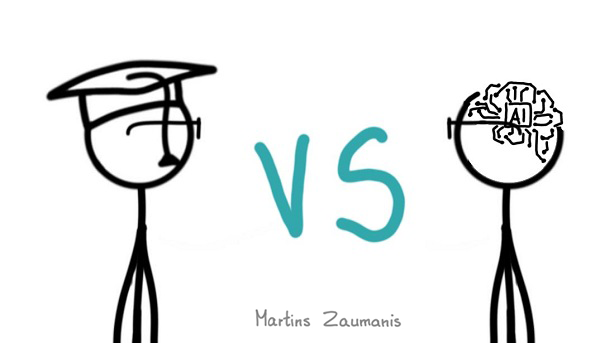
This GPT (just like any other Large Language Model) functions by processing the provided text and employing neural network AI algorithms that benchmark this text against a vast repository of natural language examples.
When the ChatGPT-based Research Paper Reviewer analyzes a manuscript, it measures the content against predefined criteria for each of the nine categories I used to train it. If the GPT’s neural network determines that the paper aligns well with these guidelines, it rates its content better. Conversely, if the AI identifies any shortcomings, the ChatGPT will point out these deficiencies.
If the GPT points out a problem, it does not mean that you HAVE to correct it. It might be that the ChatGPT’s neural network has not understood the context correctly. It might be that your paper doesn’t really need the particular edit it is suggesting make. You are in charge of deciding.
In a way, just like a review comment by a human, you can decide not to implement the recommendation given by ChatGPT. You are in charge of deciding which tips to use, and which to ignore. The good thing – you will not have to formally rebuttal the GPT. I promise the AI will not seek a revenge for an abruptly discontinued conversation.
Example Research Paper Review
Here is an example review generated by the ChatGPT Research Paper Reviewer. The uploaded manuscript is attached at the end of the review.
The manuscript I used for the review here is one of my own research papers. It is now published so it underwent a human peer-review process. I must say that implementing some of the suggestions by the GPT would have made it easier to get through the peer review process.
Access the Research Paper Review GPT
You can try the Research Paper Review GPT using the link below.
I am very curious to hear how does the tool work for you. Please let me know through my email: [email protected].
Summary: what the Research Paper Review GPT is good for?
AI will not replace peer review or suggestions by your co-authors. ChatGPT will not replace good writing. The Research Paper Review GPT will not supplement your scientific expertise. Not yet, at least.
However, there are various ways in which the AI-based Research Paper Reviewer can assist you:
- The GPT will evaluate your research paper’s content against the general standards of writing thorough research papers. It draws its judgement from the book Write an Impactful Research Paper. The provided review will help you identify any shortcomings in your paper.
- The GT will provide a summary of your research paper using the nine categories of a typical research paper. If this summary diverges from your intended message, it’s a cue to double-check your paper. It is possible that the manuscript is not clear enough.
- The GPT will compare the content of your research paper with the scope of the journal. This will help you to understand if the manuscript fits well with the journal, and if not – either search for another journal or change the angle of the paper to fit the journal better.
- The GPT will summarize the author’s guide and let you know if your paper does not align with the journal’s requirements. Importantly, this process will encourage you to familiarize yourself with and critically evaluate the submission guidelines.
- You can ask the AI to suggest ideas for optimizing the paper’s title and keywords for ranking higher in search. It will provide six ideas.
Good luck with the submission process! I hope ChatGPT will help you get past the notoriously difficult #Reviewer2.
ChatGPT review will not get your paper published
ChatGPT might help you to polish your research paper before submitting, but AI will not write a thorough research paper for you.
Hi! My name is Martins Zaumanis and in my interactive online course Research Paper Writing Masterclass I will show you how to write research papers efficiently using a four-step system called “LEAP”. You will learn to to visualize your research results, define a message that convinces your readers, and write each section of the paper. Step-by-step.
Author

Hey! My name is Martins Zaumanis and I am a materials scientist in Switzerland (Google Scholar). As the first person in my family with a PhD, I have first-hand experience of the challenges starting scientists face in academia. With this blog, I want to help young researchers succeed in academia. I call the blog “Peer Recognized”, because peer recognition is what lifts academic careers and pushes science forward.
Besides this blog, I have written the Peer Recognized book series and created the Peer Recognized Academy offering interactive online courses.




